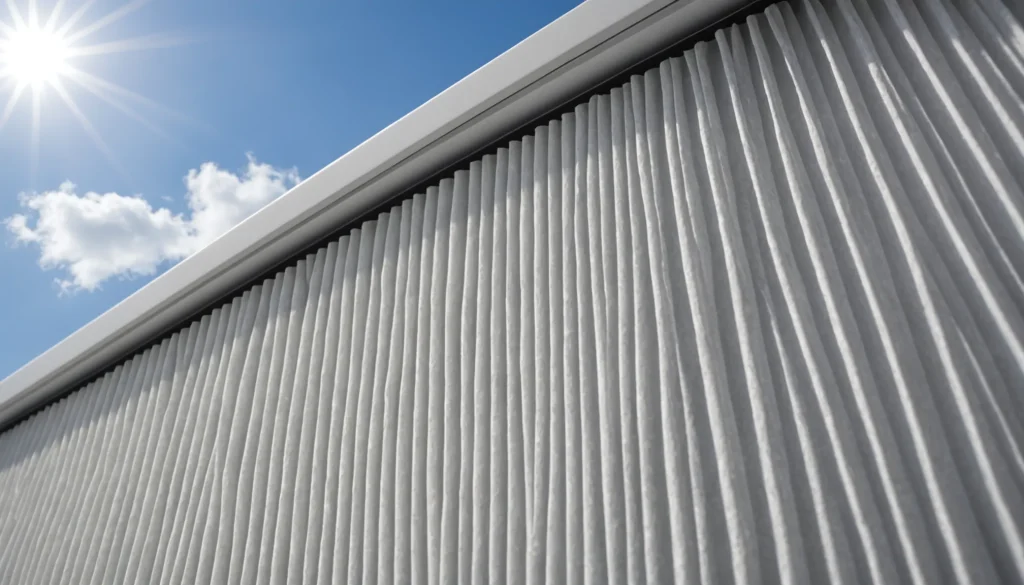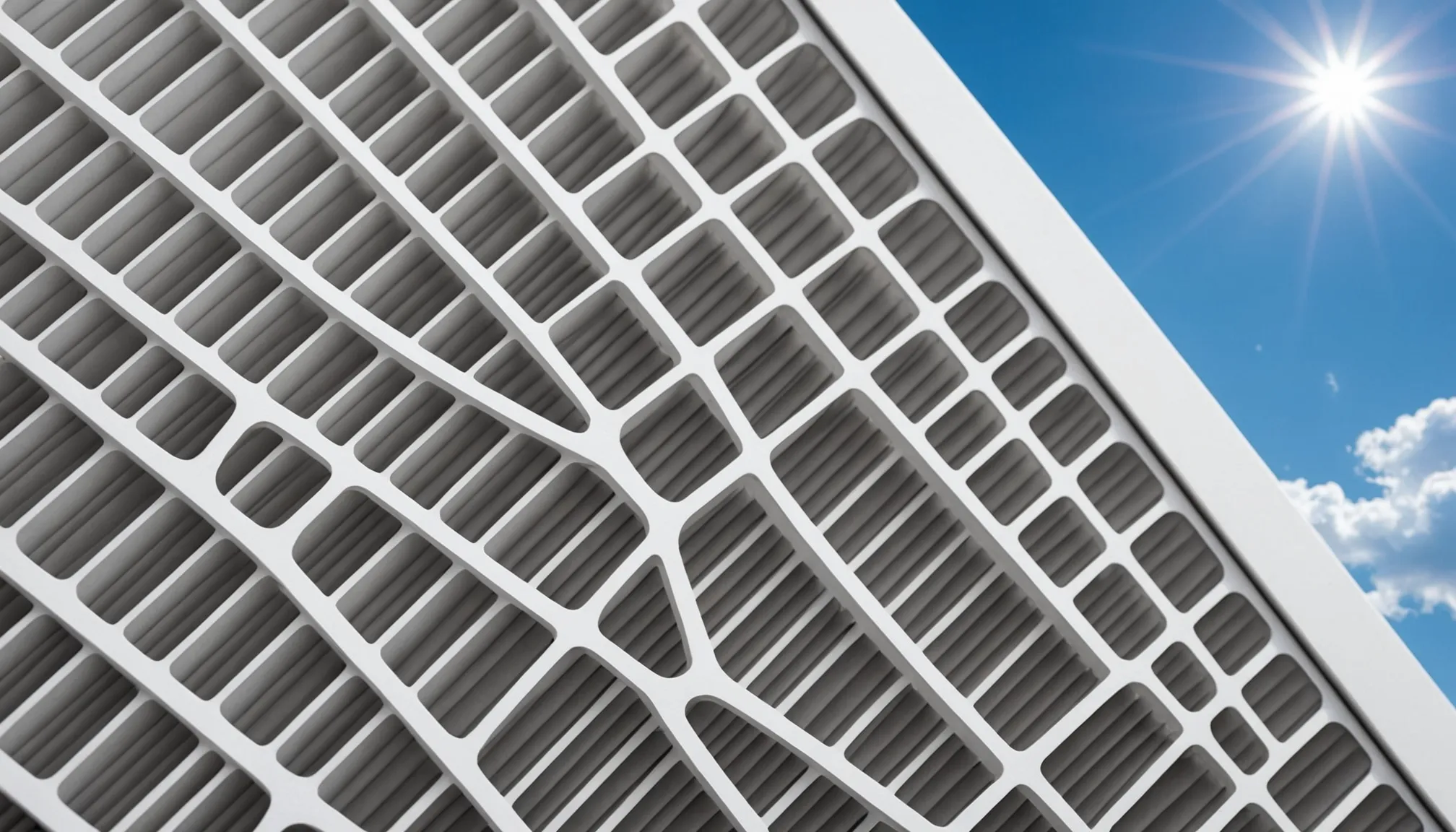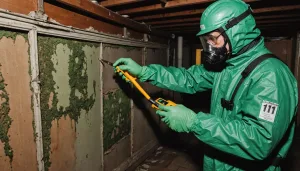One of the most crucial steps in ensuring your HVAC system operates efficiently throughout the summer is checking and replacing air filters regularly. Air filters play a vital role in maintaining good indoor air quality, ensuring that pollen, dust, and other airborne particles are effectively captured and kept from circulating through your home. An obstructed air filter can compromise this process, causing your system to work harder, thereby reducing its efficiency and increasing your energy costs.
A fresh air filter not only promotes better air quality but also contributes significantly to energy savings. When airflow is obstructed by a dirty filter, your HVAC system requires more power to push air through, much like trying to breathe through a clogged straw. This additional workload not only increases your utility bills but also accelerates wear and tear on the system, which may lead to costly repairs or even a complete system breakdown over time.
For optimal performance, it’s advisable to check your air filters monthly, especially during peak usage periods like summer. Most filters require replacement every 1-3 months, but this interval can vary based on several factors such as filter type, local air quality, and household conditions like the presence of pets or smokers. To better illustrate the differences and help you make informed decisions, consider the following comparison of common filter types:
| Filter Type | Change Frequency | Cost | Performance |
| Fiberglass Filters | 30 Days | Low | Basic |
| Pleated Filters | 3 Months | Moderate | Medium |
| HEPA Filters | 6-12 Months | High | High |
While it might be tempting to overlook this aspect of seasonal maintenance, investing time and effort in managing your air filters can extend the life of your HVAC system and improve its overall effectiveness. If you have trouble remembering the last time you changed your filters, consider setting a reminder on your phone or marking it on your calendar. By doing so, you maintain a proactive approach, ensuring your home remains cool and your energy consumption remains low, allowing for smoother, uninterrupted comfort throughout the hot months.
Optimizing thermostat settings
To ensure your home stays cool and efficiently managed, paying close attention to your thermostat settings is vital. Optimizing these settings can lead to significant energy savings and a comfortable indoor environment without overburdening your HVAC system. Here’s a step-by-step guide to help you optimize your thermostat settings for the summer season:
1. Program Your Thermostat:
– If you have a programmable thermostat, set it to automatically adjust the temperature according to your daily routine.
– On weekdays, set the temperature higher when you’re not home and lower when you’re expected to return. Consider a setting around 78°F (26°C) when you are indoors and awake, and a few degrees higher when you are asleep or out of the house.
2. Utilize Zoning Features:
– Some HVAC systems allow you to control different zones within the house, which can be particularly useful in larger homes.
– Program zones to cool specific areas only when in use, reducing overall energy consumption.
3. Avoid Frequent Adjustments:
– Constantly changing the thermostat settings can cause your system to work harder, leading to inefficiencies.
– Set a consistent schedule and stick to it as much as possible to prevent unnecessary strain on your system.
4. Take Advantage of Smart Thermostat Technologies:
– Consider upgrading to a smart thermostat if you haven’t already. These devices offer advanced features such as learning your schedule, detecting when you’re home, and even adjusting settings based on weather forecasts.
– Use smartphone apps to adjust your thermostat when you’re away, ensuring optimal settings are in place before you return.
5. Regularly Monitor and Adjust for Seasonal Changes:
– Each season brings different temperature patterns which require adjustments in your thermostat schedule.
– As summer intensifies, monitor the settings and make incremental changes to accommodate hotter outdoor temperatures while maintaining energy efficiency.
By implementing these steps, you can maximize the efficiency of your HVAC system while ensuring sustained energy savings throughout the summer. This approach not only enhances comfort but also complements your seasonal maintenance efforts, ensuring your equipment runs smoothly without unplanned hikes in your energy bills. Remember, investing in thermostat optimization is a proactive step towards a more efficient and comfortable home environment.
Inspecting and cleaning vents
When the sweltering summer heat rolls in, your HVAC system’s ability to distribute cool air efficiently throughout your home is crucial. This process relies heavily on the cleanliness and proper functioning of your air vents. Clean vents are essential for maintaining an unobstructed airflow, which is a critical component in ensuring the effectiveness of your HVAC system. Over time, dust, pet dander, and other debris can accumulate in vents, potentially obstructing airflow and causing your system to work harder than necessary, which can lead to increased energy consumption and higher utility bills.
Regular inspection and cleaning of your vents are a simple yet effective preventive measure you can take to enhance your system’s performance. Start by removing vent covers and conducting a thorough visual inspection. Look inside using a flashlight to check for any significant buildup of dust or debris. If you find any, it’s advisable to vacuum the ducts with a brush attachment. This process will not only improve airflow but also contribute to better indoor air quality, creating a healthier living environment for you and your family.
For a more thorough cleansing, consider hiring a professional duct cleaning service. While it might seem like a seasonal maintenance task that can be postponed, having your ducts professionally cleaned every few years can dramatically improve air quality and energy savings. An expert can reach deep into the ductwork that might be inaccessible with ordinary vacuum cleaners, extracting hidden allergens and enhancing the overall efficiency of your HVAC system.
Beyond immediate cleaning, there are additional steps you can take to maintain vent efficacy throughout the summer. Ensure that furniture, rugs, and curtains are not blocking the vents. Such obstructions can prevent proper air distribution, misleading your system into operating longer to meet cooling demands. Strategically positioning furniture can significantly improve airflow, enhancing both comfort and system performance.
Maintaining clear and efficient air ducts is a pivotal part of your HVAC seasonal maintenance routine. By keeping the airflow pathways clear, your system can distribute cooled air more evenly and efficiently, promoting optimal comfort during the hottest months. Moreover, these practices support your broader efforts in energy savings, leading to lower utility bills and reducing wear and tear on your HVAC system. Investing time in vent inspection and cleaning can thus extend the lifespan of your entire system, safeguarding your investment and enhancing your home’s comfort level year after year.
Sealing windows and doors
Ensuring your home remains cool and your HVAC system operates efficiently goes beyond maintaining the internal components. Sealing windows and doors is a crucial step in reducing energy waste and maximizing cooling effectiveness. Drafts and leaks, although often unnoticed, can lead to significant energy loss, forcing your air conditioning system to work overtime. This not only escalates your utility bills but also reduces the longevity and effectiveness of your HVAC system.
Start by inspecting all windows and doors for any visible gaps or cracks. These can occur naturally over time due to building settling or wear and tear. You can perform a simple test by holding a lit candle or incense stick around the edges of your windows and doors; if the flame or smoke wavers, there’s likely a draft that needs addressing. Once you’ve identified these leakage points, apply weatherstripping or caulking to seal them. Weatherstripping is ideal for movable components like doors, while caulking is more appropriate for stationary areas such as window frames.
Investing in energy-efficient windows and doors can significantly enhance your home’s insulation. If replacement is not feasible at the moment, consider using thermal window coverings or shades. These can provide an additional barrier against heat, reducing the strain on your HVAC system. Moreover, applying reflective window film can help reduce the heat absorbed from sunlight, keeping your home cooler during peak daylight hours.
Beyond sealing windows and doors, don’t overlook the importance of maintaining them. Regularly lubricating hinges and cleaning tracks can prevent future gaps that may compromise your home’s insulation. In maintaining the sealing integrity of your home, not only do you bolster your HVAC system’s performance, but you also support your broader seasonal maintenance strategy focused on energy savings.
Remember, taking the time to properly seal your windows and doors is an investment in long-term efficiency and comfort. While it might seem like a minor task, its impact on reducing energy consumption and improving your living environment throughout the summer months is significant. Keep these tips in mind as you continue to ensure your home stays comfortably cool and your HVAC system operates at its optimal performance level.
Maintaining outdoor units
Before the sweltering heat of the summer fully kicks in, attending to the outdoor component of your HVAC system is essential for both energy savings and optimal performance. The outdoor unit, often referred to as the condenser, plays a critical role in maintaining indoor comfort by dissipating the heat extracted from your home. To ensure this component functions effectively through the season, regular seasonal maintenance is necessary.
Begin by visually inspecting the unit for any visible debris such as leaves, grass clippings, or accumulated dirt, which can obstruct airflow. These obstructions force the system to work harder, reducing the cooling efficiency and potentially leading to overheating. Ensure there is at least 2 feet of clearance around the unit to allow for adequate airflow. Trim back any vegetation and clear away any objects that may be encroaching upon this space. Additionally, pay special attention to the condenser coils. Over time, these coils can become dirty and clogged, impeding the unit’s ability to efficiently release heat. Use a garden hose to gently rinse the coils, removing any built-up grime. However, take care not to damage the delicate fins surrounding the coils, and avoid using high-pressure water, which could bend them.
Another aspect of maintaining outdoor units involves checking the unit’s level. Over time, the concrete pad that supports the condenser can settle unevenly, causing the unit to tilt. An uneven unit can strain the compressor and lead to premature wear. If necessary, seek professional help to level the unit, or use a simple level tool to make minor adjustments yourself. Keeping the unit level will ensure it operates smoothly and efficiently without putting undue stress on any single part.
Furthermore, it’s important to assess the refrigerant lines that run between the indoor and outdoor components. These lines should be insulated properly to prevent energy loss. Inspect the insulation for any cracks or signs of deterioration. Replacing old or damaged insulation can prevent the refrigerant from becoming too warm, which can lead to reduced efficiency and increased energy consumption.
Don’t forget to turn off the power and conduct a thorough check of the unit’s electrical connections at this point. Look for any signs of wear or corrosion on the connections, and consult a professional for any necessary repairs or replacements. Ensuring all connections are secure prevents potential safety hazards and promotes reliable operation throughout the season.
By dedicating time to maintain your outdoor HVAC unit, you not only bolster the system’s efficiency but also significantly enhance the overall comfort and air quality of your home. As part of a comprehensive seasonal maintenance approach, keeping your outdoor unit in prime condition is a wise strategy for long-term savings and satisfaction.
In conclusion, a proactive approach to maintaining your HVAC system with seasonal tasks like checking filters, optimizing thermostat settings, inspecting vents, sealing your home, and caring for outdoor units will not only keep your home comfortable during the summer but also maximize the system’s efficiency and lifespan. By investing time and effort into these essential maintenance activities, you ensure your HVAC system runs smoothly, helping you achieve energy savings and peace of mind as you enjoy the warmth of the season.






